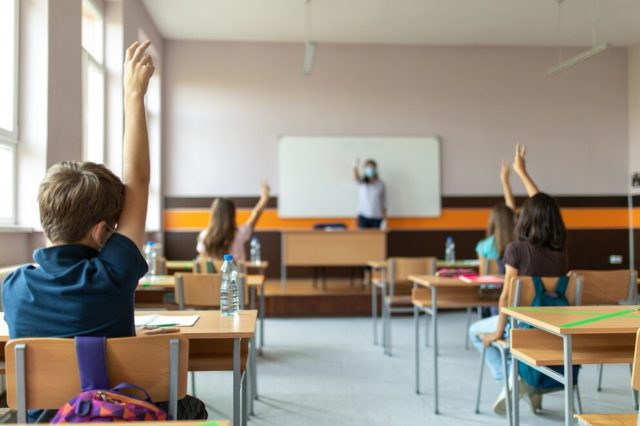
In 2020, school became a two-dimensional computer screen and something closer to a do-it-yourself project for children around the globe.
The shift to virtual learning, necessitated by efforts to stem the spread of COVID-19, brought on social ramifications that were harmful for some children, less so for others, but disruptive for all. For many, a return to education as it was ― the 3D, in-person variety ― is fervently hoped for.
In addition to the benefits of in-person instruction, going back to the classroom could have the side-effect of being a boon in the fight against COVID-19. This pandemic has helped highlight ongoing, significant health and education disparities between communities in our country. In-person school helps decrease some of those disparities.
But just as the moves to protect students by keeping them at home required them to weather some detrimental effects, their return this fall carries new risks.
The two most important ways to protect your child from the dangers of returning to the in-person classroom:
- One, get vaccinated yourself, and if they’re old enough, get your children vaccinated and encourage others around you to do the same. The vaccine remains the most effective way of stopping the spread. Period.
- And two, talk with your kids.
For their part, school districts can work to mitigate risk by following guidance from the Centers for Disease Control and Prevention (CDC).
On July 27, the CDC updated their guidelines for schools planning to welcome students back this fall. The latest guidance, which includes universal indoor masking, and guidelines on contact tracing, disinfection and ventilation, also aligns with guidance from the American Academy of Pediatricians (AAP). According to these health authorities, students and teachers should continue to wear masks to prevent the spread of COVID-19.
The recent rise in a new strain called the delta variant is worrisome and underscores the need for precaution. Rather than forcing school administrators to parse out who has received the vaccine and who hasn’t — and by extension who should wear a mask and who shouldn’t — it’s just simpler to encourage everyone to wear masks.
Ask your kids how they really feel about wearing masks. In our experience, we don’t hear many complaints from our pediatric patients. Sometimes, we as parents project our own feelings onto our kids.
Getting to know your child is very important. That might sound simple, but some busy parents have little time for serious conversations. Every family is different. Maybe yours isn’t the type to sit down for serious heart-to-hearts, and maybe you’re afraid just by sitting down with your children you’ll worry them unduly.
Make the time. Any anxiety you cause with an uncomfortable conversation pales in comparison to their potential worries about COVID-19 and the future.
Be honest. Give them unvarnished facts. Visit the AAP website healthychildren.org if you need a source of politically neutral information that’s backed by science. For younger kids, just be open and honest and help guide them through everything they’re seeing in the news.
When speaking with older children and teenagers, try to get more feedback. Opinions, political and otherwise, are just beginning to gel for them in the Petri dish of junior high and high school. Find out how they feel and how what they’re hearing is shaping their opinions. Try to guide them in the right direction if you discover they’ve been misinformed. Again, the better you know them, the easier it’ll be — you’ll understand the boundaries.
The same holds true for the social ramifications of their returns to school. Most of the kids we see haven’t had a good time with virtual learning. Being at home is isolating. Their friends aren’t around.
For these students, who represent the majority, the return to in-person education might be cause for celebration – a return to normalcy. But not all students are the same. For some, the disruption of COVID-19, while ultimately tragic, had its plus side. Their grades soared. They felt more at ease working at home alone than with their peers.
For them, the return could be a source of anxiety. Some may suffer from depression. If the transition back to school becomes too stressful, it might be time to speak with a mental health care provider.
Our world is changing. All the social upheaval and unrest is enough to cause anyone anxiety – and your children are not immune. Communicating with them is key. Helping them understand what’s going on in the world is better for all of our health.
As our kids return to their classrooms, take a deep breath. Keep tabs on your local school board meetings, and watch the news for updates.
Remember: in-school transmission doesn’t drive community transmission. It reflects community transmission.
So keep the lines of communication open.
And most importantly ― get vaccinated.
Original source: https://news.psu.edu/story/667327/2021/08/26/medical-minute-vaccination-conversation-keys-back-school?utm_source=newswire&utm_medium=email&utm_term=667384_HTML&utm_content=08-26-2021-14-19&utm_campaign=hershey%20newswire